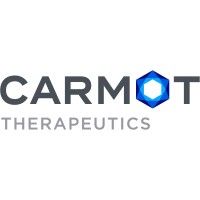预约演示
更新于:2025-05-07
Carmot Australia First Pty Ltd
私营公司
私营公司
更新于:2025-05-07
概览
关联
2
项与 Carmot Australia First Pty Ltd 相关的临床试验NCT05814107
A Double-Blind, Randomized, Placebo-Controlled Phase 1 Study Evaluating the Safety, Tolerability, Pharmacokinetics, and Pharmacodynamics of Single and Multiple Doses of CT-996 in Overweight/Obese Participants and in Patients With Type 2 Diabetes Mellitus
A study designed to assess the safety and tolerability, pharmacokinetics, and pharmacodynamics of CT-996 in overweight/obese participants and participants with T2DM.
开始日期2023-05-09 |
申办/合作机构 |
NCT04838405
A Phase 1 Randomized, Double Blind, Placebo Controlled, Study to Evaluate the Safety, Tolerability, Pharmacokinetics, and Pharmacodynamics of CT-388 in Otherwise Healthy Overweight and Obese Adult Participants and in Obese Patients with Type 2 Diabetes Mellitus
This is a first-in-human evaluation of CT-388 in a double blind, placebo controlled, randomized, SAD/MAD/MD, safety, tolerance, PK, and PD study when administered as a SC injection in otherwise healthy overweight and obese adult participants and obese participants with T2DM.
开始日期2021-07-29 |
申办/合作机构 |
100 项与 Carmot Australia First Pty Ltd 相关的临床结果
登录后查看更多信息
0 项与 Carmot Australia First Pty Ltd 相关的专利(医药)
登录后查看更多信息
118
项与 Carmot Australia First Pty Ltd 相关的新闻(医药)2025-04-24
Roche said that its future dealmaking could be impacted by potential tariffs on pharmaceuticals.
“If there are questions around tariffs, it will be more difficult to make financial sense of any M&A deals,” the Swiss company’s CEO Thomas Schinecker said on a media call to discuss its
first-quarter earnings
Thursday.
He added that this was not a Roche-specific issue. “My assumption would be that you will see an industry-wide situation where people probably reduce the [M&A] efforts at this stage,” he said.
But the company is certainly not ruling out future deals, even in its metabolic unit, which recently saw a
major partnership
with the Danish biotech Zealand Pharma.
“With the acquisition of Carmot and the partnership with Zealand, we’re feeling very good about our entry into the cardiovascular and metabolism space,” Teresa Graham, the CEO of Roche’s pharmaceuticals division, said on the call. “Are we done? I think we’re never a company that’s done.”
She said that Roche would pursue both internal R&D and inorganic development, and was “always going to be on the hunt for what’s next.”
Including Zealand’s amylin product petrelintide, Roche has five molecules in clinical development for obesity or diabetes. One of the rationales for the Zealand tie-up was that petrelintide could be combined with the incretin drugs Roche obtained via its
2023 acquisition
of Carmot, and Roche disclosed Thursday that a mid-stage study of the amylin in combination with the injected GLP-1/GIP agonist CT-388 would begin early next year.
Separately, Zealand
said
Thursday that it had kicked off a Phase 2b study of petrelintide as a monotherapy in patients with obesity and type 2 diabetes. Data could come in 2026.
Overall, Roche is working hard to limit any potential damage from tariffs that might be imposed, in the US or elsewhere. Schinecker said that four of Roche’s products make up “potentially 92%” of
possible tariff exposure
, though he declined to specify which four these were.
The sweeping changes at US healthcare agencies have had little effect on the pharma business so far, Graham said. “Obviously we’re watching very closely the evolutions within HHS and FDA. At this time, we are not seeing any slowdown either in development or approval processes,” she said, calling the situation “business as usual.”
In reference to
a letter
written by the CEOs of Novartis and Sanofi to the
Financial Times
this week, Schinecker said that the EU could make political changes to speed new medicines to market. He said there is “too much bureaucracy” in the EU, and cutting this would be important if the EU wants to accelerate economic growth, on which it has lagged the US and China for many years.
Increasing investment in the biopharma sector “is something where Europe can definitely improve on,” he said, adding that there are some approved medicines more easily accessed in other parts of the world than in parts of Europe.
He added that there are aspects of US healthcare that also need to be addressed. “If you look at the price of a medicine in the US, only 50% of the cost of medicine actually goes to the inventor, and 50% go to other players, like pharma benefit managers, insurers, etc.,” he said.
Roche’s pharma business grew by 8% at constant exchange rates to CHF11.9 billion ($14.4 billion), with the breast cancer drug Phesgo and the eye disease product Vabysmo as the top growth drivers.
临床2期并购
2025-04-22
时间来到2025年,代表中国药企参与全球竞争的“四驾马车”已经形成新的格局——恒瑞遥遥领先,中生制药、石药优势显著,百济神州成新客。撰文| Erin仅过去一年时间,全球医药研发格局已发生剧变。根据国际知名咨询机构Citeline发布的《2025年医药研发年度回顾》,在这份囊括全球6823家制药公司的报告中,Citeline评选出了全球TOP25管线规模药企。辉瑞以271项管线超越曾经的“王者”罗氏、诺华,摘得桂冠,坐稳“宇宙大药厂”之位。虽然与往年一样,有4家中国药企上榜,但前十中并未有中国药企的身影,制药“一哥”恒瑞仅排位第13,曾在榜单中的复星今年无奈落榜。不过,也有好消息诞生,百济神州以第25位跻身成新客,石药由第24名跃升至第19名。更值得一提的是,中国制药企业的自研管线遥遥领先,甚至远超艾伯维、武田等MNC。另一大显著趋势是,MNC的研发投入在强势回归,自研管线比例显著增长。但不能忽视的是,小型Biotech贡献的创新药管线占比仍在攀升。由此看到,2025年应依然是Biotech卖 “青苗”,MNC们为储备弹药继续大手笔并购/BD的一年。“新四驾马车”诞生,恒瑞遥遥领先,百济成新客报告显示,中国的新药研发再次领衔全球,以1218家制药公司、7032项在研管线数量和29.5%的占比,成为全球新药研发管线贡献量第二的国家,仅次于美国。不仅如此,从增速角度来看,2024年,中国新增了1495种新药候选物,虽然略低于美国的1683种,但增长势头明显强劲。而在这1218家制药公司中,头部制药公司的研发竞争力持续攀升。今年进入全球TOP25管线规模的制药公司中,有4家来自中国,分别是恒瑞、中生制药、石药、百济。这四家药企也共同构筑起中国创新药企参与全球竞争的新“四驾马车”。其中,恒瑞众望所归,虽然排名上从第8位滑落到第13位,但仍是榜单中排名最靠前的中国药企,其自研管线数量也猛增30项,在全球仅次于辉瑞;另外,中生制药仍保持原有位次,石药集团由第24名跃升至第19名,百济神州也成为了榜单新客。遗憾的是,复星今年并未进入TOP25阵营。自主创新能力的质变式提升,已成为中国制药企业在全球最显著的竞争优势。从Pharmaprojects所统计的数据来看,对比上年同期,TOP25阵营中恒瑞以绝对优势(163项)领跑自研管线榜单,中生制药(104项)与石药集团(84项)同样表现亮眼,其自主研发规模甚至已超越艾伯维、武田等跨国制药巨头。这种创新实力的跃升在财务数据中也得到充分展现:恒瑞2024年报披露未来三年将有47项创新成果上市,其中,2025-2027年分别预计上市项目11项、13项和23项,覆盖肿瘤、代谢及心血管疾病、免疫和呼吸系统疾病等治疗领域,包括HER2 ADC、GLP-1药物等重磅产品。更引人注目的是,恒瑞自主研发的Lp(a)口服小分子药物HRS-5346虽处II期临床,但获得了默沙东高达2亿美元首付款及总额20亿美元的授权协议。这标志着恒瑞的原创新药项目受到了全球认可。中生制药的转型成效同样显著,2024年创新药收入首破百亿达到120.6亿元,占总营收比例攀升至41.8%。根据其战略规划,创新产品数量将从2024年的17个增至2025年的22个,预计到2027年将突破30个大关,形成每年约5个创新药获批的稳定产出节奏。这种每年都有产品上市的确定性信息披露,也代表了中国头部药企开始进入创新成果的集中收获期。另外,国内创新药行业突破性研发成果将在2025年AACR年会上集中爆发,90余家中国药企将携超200项研究亮相,尤其是在ADC、双抗/多抗等前沿领域形成显著优势,这无疑是中国创新药研发强大实力的展现。百济神州的EGFR/MET三抗BG-T187和4-1BB/GPC3双抗BGB-B2033将在今年AACR上完成首秀。前者还是百济神州入局三抗领域首个获批临床的产品。石药将携带两款重磅产品亮相,分别是EGFR ADC SYS6010治疗晚期实体瘤的I期研究入选口头报告,CD20和CD47靶点双融合蛋白 JMT601入选壁报。值得一提的是,SYS6010还是目前非小细胞肺癌领域进展最快的EGFR ADC之一,具有BIC潜力。在TOP25阵营之外,中国医药创新的“第二梯队”同样呈现爆发式增长。华东医药以“自主+引进”的双轮驱动模式实现惊人跨越,从国内第十跃居第五,其战略布局涵盖自免、代谢、ADC、CAR-T等热门领域,特别是在GLP-1赛道构建了涵盖口服小分子、双靶点、长效三靶点的完整产品矩阵。三生制药作为新晋者,也显示出其多元管线布局已建立竞争优势。 推荐阅读 * 营收、净利创新高!恒瑞“杀”回来了* 超800亿!罗氏豪赌下个药王MNC集体爆发,辉瑞“杀进”榜首MNC则显示出了与往年几乎完全相左的趋势,不仅整体管线规模在扩张,似乎在过去一年间集体“发力”自研管线。其中,辉瑞不仅凭借205到271项的爆发式增长夺得全球TOP25管线规模最大的MNC,其自研管线数量也是最高,达166项,一年增长了39项。在辉瑞之后,罗氏和诺华仍然占据管线规模前三位置,AZ和赛诺菲则紧随其后。值得注意的是,AZ、诺华、赛诺菲、BMS、礼来等跨国大药企都集体呈现出超过30项自研管线的增长。变动最大的是赛诺菲。一年时间,赛诺菲就从第10名跃升至第5名,总体管线增加了近100项。这离不开赛诺菲以Dupixent为支点,持续扩散优势展开的研发布局:如在自免和呼吸领域,赛诺菲构建起递进式创新矩阵:IL-33单抗Itepekimab针对COPD已进入III期临床,IL-4/IL-13双抗lunsekimig在哮喘领域快速推进至II期临床。在血液肿瘤领域,BTK抑制剂tolebrutinib即将迎来FDA的PDUFA;蛋白降解药物KT-474和口服BTK抑制剂rilzabrutinib的临床进展同样引人注目。另外,赛诺菲还通过与Orano Med达成股权投资及独家许可协议,联合开发下一代放射性配体药物。而17亿美元收购Inhibrx Biosciences获得的INBRX-101,则为其在罕见病领域开辟新战场。除了报告撰写机构的数据计算方法变化带来的影响外,MNC自研管线的逆势增长,更多来自于他们研发投入的强势回归。E药经理人统计,全球营收TOP10药企中,8家研发投入实现两位数增长,艾伯维以67%的增幅领跑行业。即便面临收入增长压力,辉瑞也仍将研发强度维持在占营收比17%的高位,其“以研发换未来”的战略决心可见一斑。这种投入产出效率的优化,使得MNC在保持规模优势的同时,逐步在修复因专利悬崖等诸多因素导致的创新断层。而往年以优质自研管线取胜的罗氏,反而在今年自研管线增幅最小。其实从罗氏近期的动作中也可以明显看出,罗氏似乎正在通过并购与BD的方式,找回曾经错过的风口。例如在3月,罗氏宣布与丹麦制药企业Zealand Pharma 签订独家合作和许可协议,共同开发和商业化一款胰淀素类似物(Amylin)Petrelintide,合作潜在最高总金额达到53亿美元,其中16.5亿美元的预付款,创下2025年以来跨国药企达成最高预付款交易记录。不仅如此,罗氏还曾在2023年,花费总额约31亿美元收购Carmot重回GLP-1赛道。不过,虽然从数字上与往年的趋势大相径庭,但底层逻辑并未发生转变,MNC仍然更偏向“价值创造”属性的并购/BD,手握大笔资金在新兴生物技术赛道率先抢位,在自主创新与生态整合间寻找平衡点。在未来,可以预见的是,对于小型Biotech的并购/BD——作为MNC储备弹药,仍不会减少。因为从Citeline的分析中也可以看出,仅手握1-2个核心研发管线的Biotech公司,在全球研发管线中仍然贡献绝大部分,并且占比从18%升至了19.4%。参考资料:Citeline《2025年医药研发年度回顾》一审| 黄佳二审| 李芳晨三审| 李静芝精彩推荐大事件 | IPO | 融资&交易 | 财报季 | 新产品 | 研发日 | 里程碑 | 行业观察 | 政策解读 | 深度案例 | 大咖履新 | 集采&国谈 | 出海 | 高端访谈 | 技术&赛道 | E企谈 | 新药生命周期 | 市值 | 新药上市 | 商业价值 | 医疗器械 | IND | 周年庆大药企 | 竞争力20强 | 恒瑞 | 石药 | 中生制药 | 齐鲁 | 复星 | 科伦 | 翰森 | 华润 | 国药 | 云南白药 | 天士力 | 华东 | 上药创新药企 | 创新100强 | 百济 | 信达 | 君实 | 复宏汉霖 | 康方 | 和黄 | 荣昌 | 亚盛|康宁杰瑞|贝达|微芯|再鼎|亚虹跨国药企|MNC卓越|辉瑞|AZ|诺华|罗氏|BMS|默克|赛诺菲|GSK|武田|礼来|诺和诺德|拜耳供应链|赛默飞|药明|凯莱英|泰格|思拓凡|康龙化成|博腾|晶泰|龙沙|三星启思会 | 声音·责任 | 创百汇 | E药经理人理事会 | 微解药直播 | 大国新药 | 营销硬观点 | 投资人去哪儿 | 分析师看赛道 | 药事每周谈 | 中国医药手册
并购财报核酸药物带量采购
2025-04-19
·医药笔记
▎Armstrong诺和诺德与礼来的纠葛已有百年历史,从1920s年代班廷和贝斯特首次实现动物胰岛素提取,糖尿病就不再是一种致命性疾病,转为一种可以控制的慢性病。班廷(右)和贝斯特(左)胰岛素的产业化方面,礼来与诺和诺德从一开始就是主要的竞争对手。班廷、贝斯特实现提取牛胰岛素之后,多伦多大学将专利许可给礼来等药企。1922年,August Krogh(1920年诺贝尔生理学或医学奖获得者)与夫人Marie Krogh到耶鲁大学访问,听到了班廷、贝斯特提取牛胰岛素治疗糖尿病的报告。由于Marie Krogh本人就是二型糖尿病患者,两人对此格外感兴趣并与麦克莱德教授进行了商谈,最终拿到了北欧地区生产销售提取胰岛素的授权。1922年12月,Krogh夫妇与Hans Christian Hagedorn医生合作,创立了诺德胰岛素实验室(后因为创始人分歧,成立一家新公司诺和,几十年后的1989年重新合并)。长达几十年的时间里,礼来与诺和诺德都是主要的动物胰岛素厂商。1978年,基因泰克的科学家宣布在大肠杆菌中成功表达人胰岛素,开启了基因工程药物的新篇章。1982年,礼来获得基因泰克授权的人胰岛素获FDA批准上市,成为首个基因工程药物。从此,胰岛素进入基因工程重组的二代胰岛素时代,诺和诺德则发展起酵母表达胰岛素的技术。到上世纪90年代,三代胰岛素(速效和长效)开始取代二代胰岛素。此后的胰岛素迭代渐渐接近尾声,直到2024年周制剂胰岛素才获批上市,但整个胰岛素市场已经开始快速萎缩。与此同时,让糖尿病市场重新开始增长的动力开始出现,那就是GLP-1类药物,尤其是司美格鲁肽、度拉糖肽为代表的周制剂上市后,市场规模快速扩张,并很快超过胰岛素成为糖尿病领域的最大品类。利拉鲁肽尤其是司美格鲁肽开拓减重市场之后,GLP-1的市场规模进入爆发式增长阶段,2024年,GLP-1市场规模超过500亿美元,由诺和诺德、礼来统治整个市场。2024年,由于GLP-1在减重市场的快速扩张和庞大的潜在市场空间,礼来、诺和诺德一度占据药企市值第一、第二的位置,但礼来双靶点替尔泊肽在疗效上具有迭代优势,放量速度更快,与诺和诺德市场份额差距快速缩小。(虚线的Wegovy、Zepbound、Saxenda为减重适应症)在迭代药物的开发方面,礼来在双靶点之后,三靶点GGG、小分子GLP-1都居于领先地位,小分子GLP-1受体激动剂Orforglipron刚刚宣布糖尿病三期临床获得成功。诺和诺德走的是Amylin联合司美格鲁肽治疗路线,虽然在三期临床获得成功,但疗效为双靶点水平,GLP-1/Amylin初步疗效更好,但尚处于一期临床阶段。为了弥补多靶点的缺失,诺和诺德重金引进联邦制药的GGG三靶点产品。此消彼长之下,礼来市值逼近8000亿美元,稳坐药企市值第一的宝座,诺和诺德则市值则下滑到2600亿美元,不足礼来的三分之一。总结面对减重这一新市场,GLP-1已经不仅仅是礼来、诺和诺德的双巨头之战,越来越多的MNC和biotech开始加入战场,中国企业也开始扮演举足轻重的角色。罗氏收购Carmot,引进Zealand的Amylin,勃林格殷格翰引进Zealand的GLP-1/GCG,艾伯维引进Gubra的Amylin,辉瑞、安进走自主研发路线,辉瑞布局小分子GLP-1但失败,安进重点开发GIPR抗体偶联GLP-1。国内方面,联邦制药的三靶点GGG授权给诺和诺德,恒瑞医药的双靶点、三靶点和小分子GLP-1通过NewCo出海,诚益生物的小分子GLP-1授权给阿斯利康,翰森制药的小分子GLP-1授权给默沙东,闻泰医药的小分子授权给箕星药业,先为达的每周口服GLP-1和Amylin通过NewCo出海。Armstrong技术全梳理系列GPRC5D靶点全梳理;CD40靶点全梳理;CD47靶点全梳理;补体靶向药物技术全梳理;补体药物:眼科治疗的重要方向;Claudin 6靶点全梳理;Claudin 18.2靶点全梳理;靶点冷暖,行业自知;中国大分子新药研发格局;被炮轰的“me too”;佐剂百年史;胰岛素百年传奇;CUSBEA:风雨四十载;中国新药研发的焦虑;中国生物医药企业的研发竞争;中国双抗竞争格局;中国ADC竞争格局;中国双抗技术全梳理;中国ADC技术全梳理;Ambrx技术全梳理;Vir Biotech技术全梳理;Immune-Onc技术全梳理;亘喜生物技术全梳理;康哲药业技术全梳理;科济药业技术全梳理;恺佧生物技术全梳理;同宜医药技术全梳理;百奥赛图技术全梳理;腾盛博药技术全梳理;创胜集团技术全梳理;永泰生物技术全梳理;中国抗体技术全梳理;德琪医药技术全梳理;德琪医药技术全梳理2.0;和铂医药技术全梳理;荣昌生物技术全梳理;再鼎医药技术全梳理;药明生物技术全梳理;恒瑞医药技术全梳理;豪森药业技术全梳理;正大天晴技术全梳理;吉凯基因技术全梳理;基石药业技术全梳理;百济神州技术全梳理;百济神州技术全梳理第2版;信达生物技术全梳理;信达生物技术全梳理第2版;中山康方技术全梳理;复宏汉霖技术全梳理;先声药业技术全梳理;君实生物技术全梳理;嘉和生物技术全梳理;志道生物技术全梳理;道尔生物技术全梳理;尚健生物技术全梳理;康宁杰瑞技术全梳理;科望医药技术全梳理;科望医药技术全梳理2.0;岸迈生物技术全梳理;礼进生物技术全梳理;康桥资本技术全梳理;余国良的抗体药布局;荃信生物技术全梳理;安源医药技术全梳理;三生国健技术全梳理;仁会生物技术全梳理;乐普生物技术全梳理;同润生物技术全梳理;宜明昂科技术全梳理;派格生物技术全梳理;迈威生物技术全梳理;Momenta技术全梳理;NGM技术全梳理;普米斯生物技术全梳理;普米斯生物技术全梳理2.0;三叶草生物技术全梳理;贝达药业抗体药全梳理;泽璟制药抗体药全梳理;恒瑞医药抗体药全梳理;齐鲁制药抗体药全梳理;石药集团抗体药全梳理;豪森药业抗体药全梳理;华海药业抗体药全梳理;科伦药业抗体药全梳理;百奥泰技术全梳理;凡恩世技术全梳理。
上市批准临床3期
100 项与 Carmot Australia First Pty Ltd 相关的药物交易
登录后查看更多信息
100 项与 Carmot Australia First Pty Ltd 相关的转化医学
登录后查看更多信息
组织架构
使用我们的机构树数据加速您的研究。
登录
或

管线布局
2025年12月21日管线快照
无数据报导
登录后保持更新
药物交易
使用我们的药物交易数据加速您的研究。
登录
或

转化医学
使用我们的转化医学数据加速您的研究。
登录
或

营收
使用 Synapse 探索超过 36 万个组织的财务状况。
登录
或

科研基金(NIH)
访问超过 200 万项资助和基金信息,以提升您的研究之旅。
登录
或

投资
深入了解从初创企业到成熟企业的最新公司投资动态。
登录
或

融资
发掘融资趋势以验证和推进您的投资机会。
登录
或

生物医药百科问答
全新生物医药AI Agent 覆盖科研全链路,让突破性发现快人一步
立即开始免费试用!
智慧芽新药情报库是智慧芽专为生命科学人士构建的基于AI的创新药情报平台,助您全方位提升您的研发与决策效率。
立即开始数据试用!
智慧芽新药库数据也通过智慧芽数据服务平台,以API或者数据包形式对外开放,助您更加充分利用智慧芽新药情报信息。
生物序列数据库
生物药研发创新
免费使用
化学结构数据库
小分子化药研发创新
免费使用
